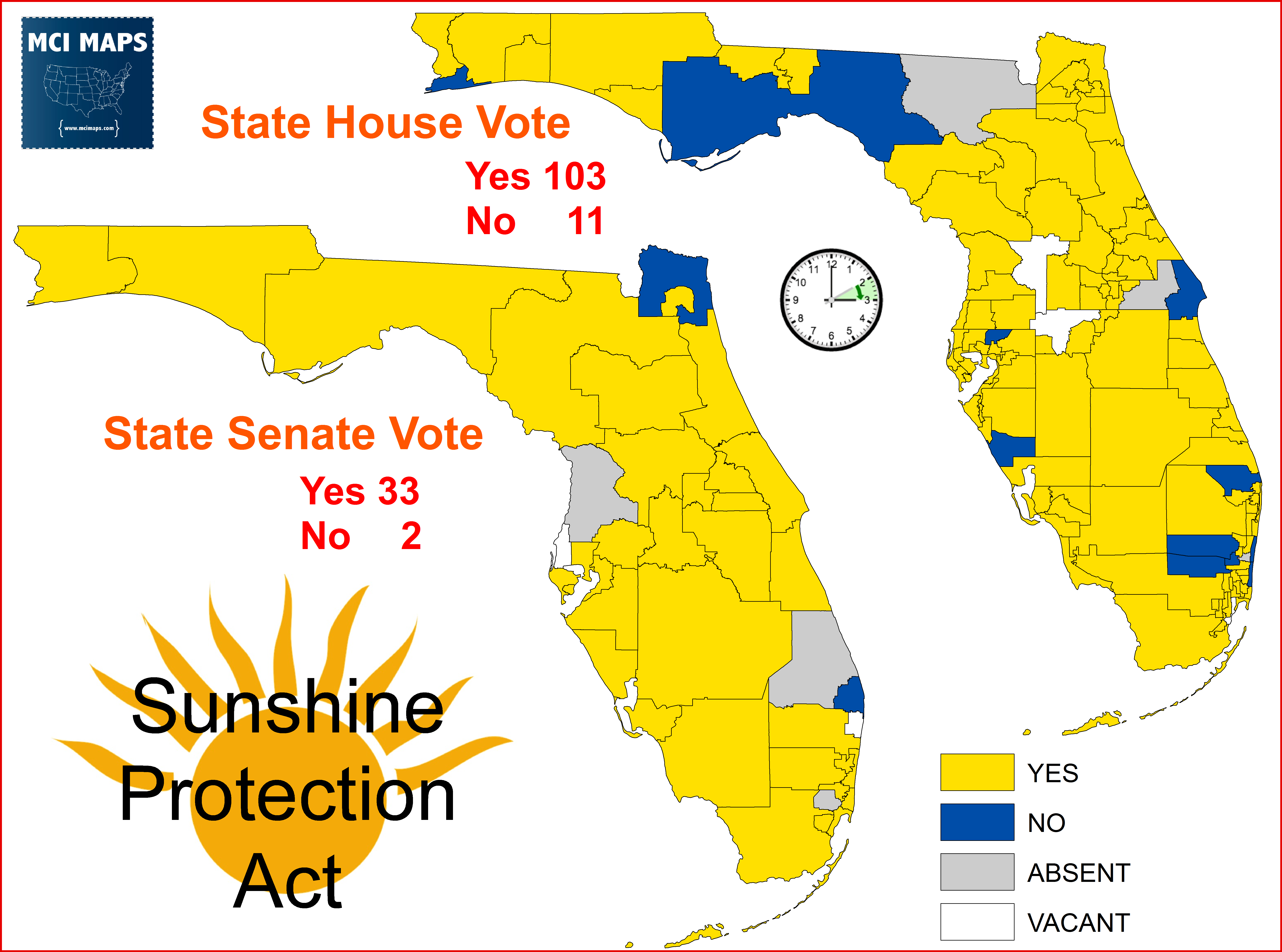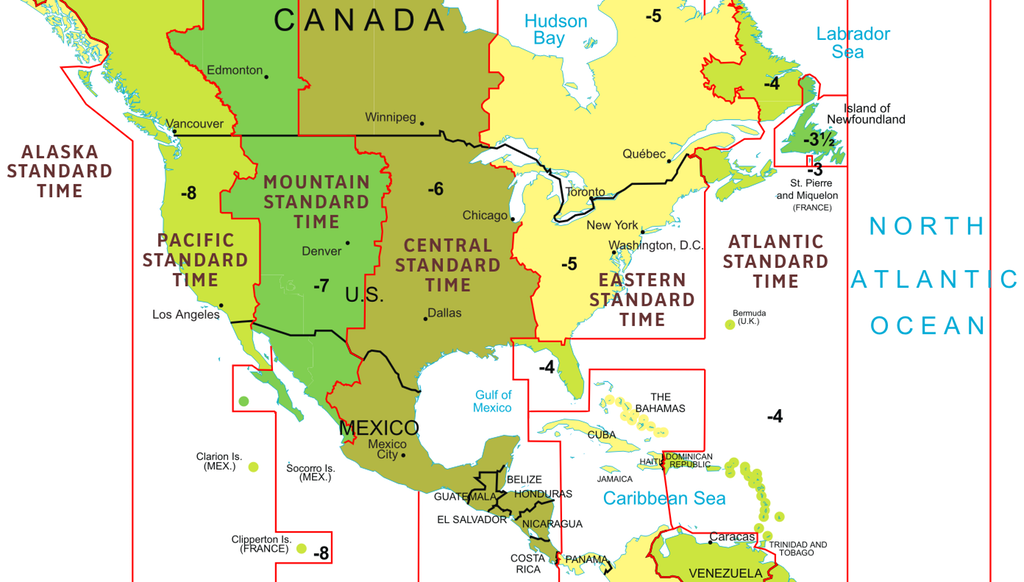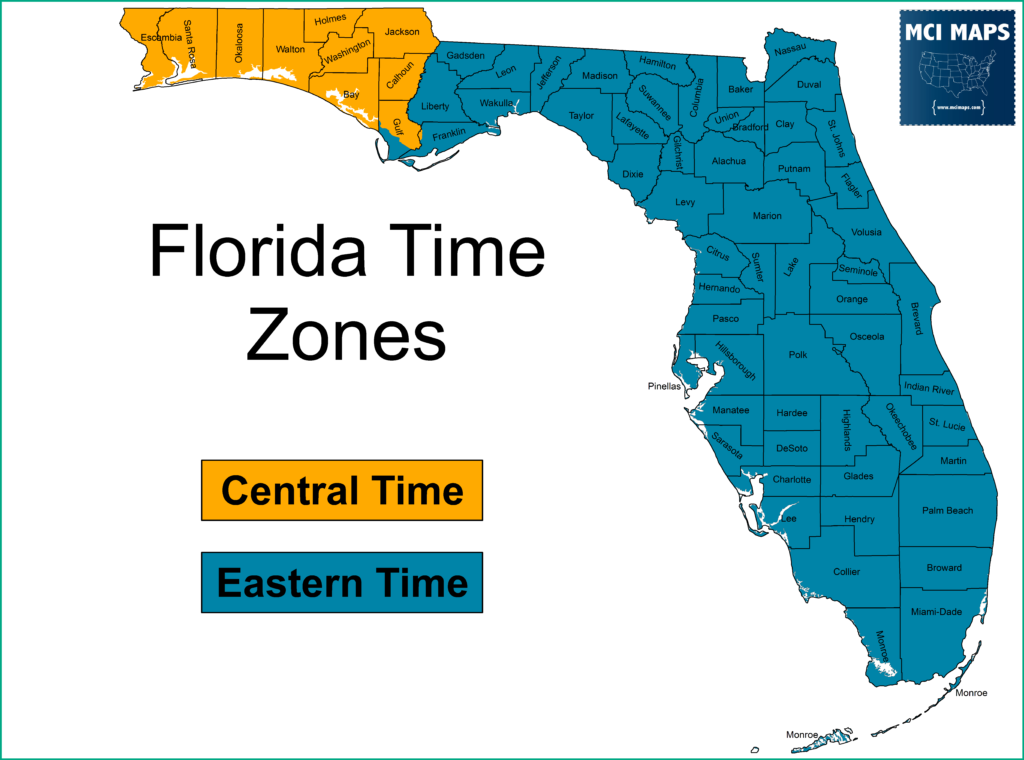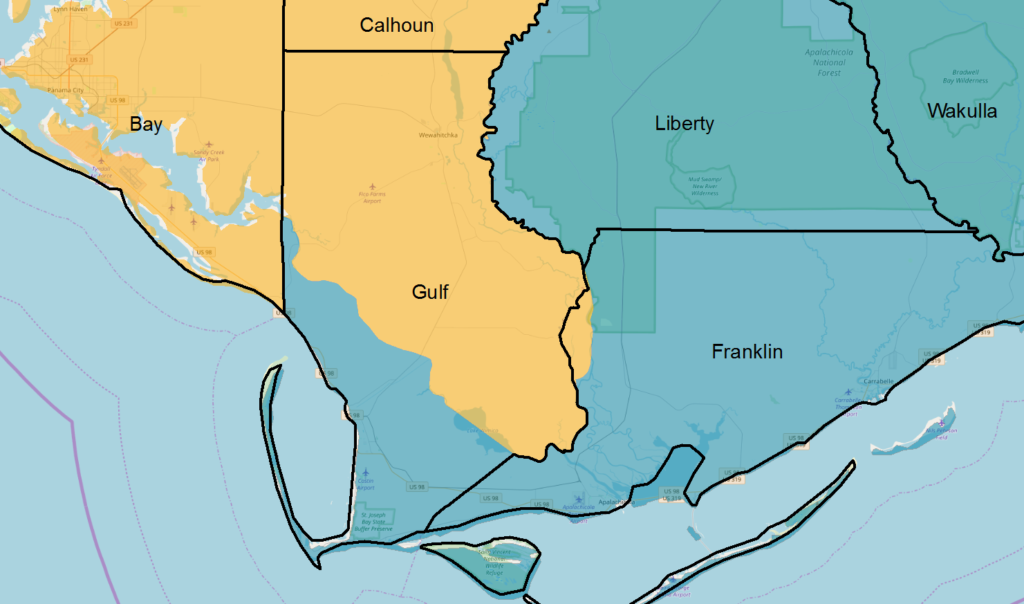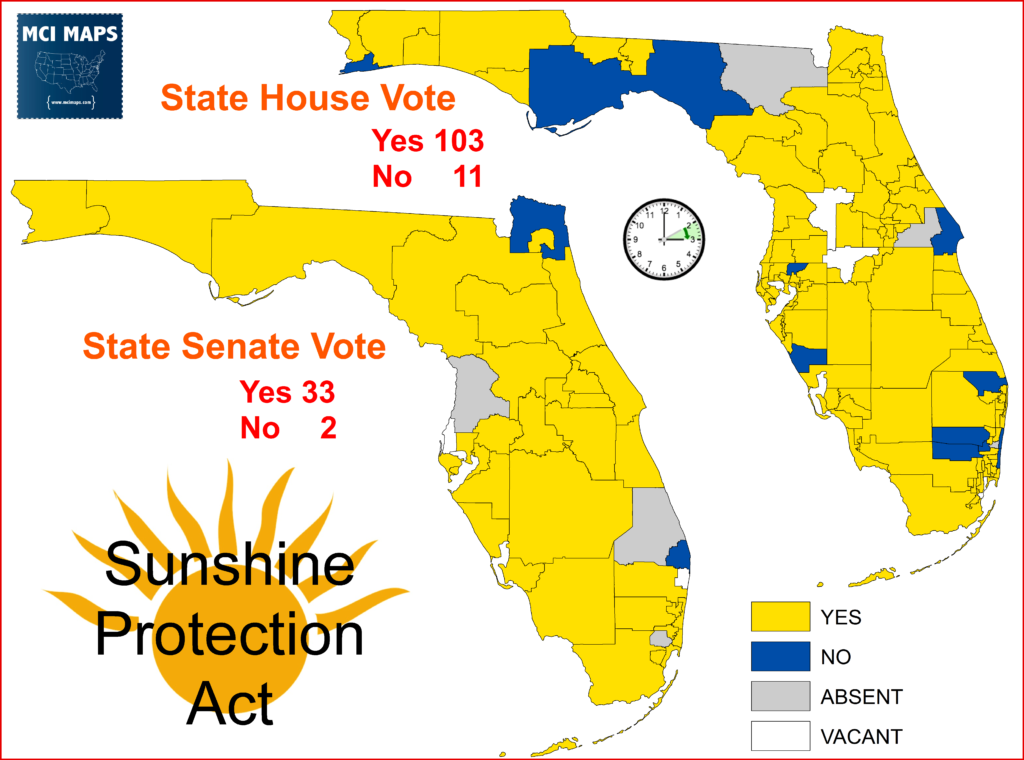In the final weeks of Florida’s Legislative Session, lawmakers took up a proposal by State Senator Greg Steube that would make daylight savings time permanent in Florida. The measure, if implemented, would mean Florida would not turn its clocks back in October. The effect of daylight savings time (when clocks are turned forward in March) is daylight lasting longer into the evening and it remaining darker later into the morning. When clocks are turned back in October, it gets darker earlier and lighter earlier.Proponents of the plan to make this permanent in Florida cite potential benefits to tourism with an extended amount of light in the evening. Opponents cite children waiting for school buses in the dark as well as morning commutes.
However, the real issue that seemed to get far less attention was what the effects of the change would be on Florida’s relationship with the rest of the eastern time zone. The legislation would put Florida in the Atlantic Time Zone, an hour ahead of the east, for the winter and early spring months.
The time zone map would like this during the winter (map via Practical Tangent )
The original Senate bill would have also united Florida under one time zone. Currently the Northwestern panhandle is in central time.
However, the proposal met fierce opposition from the three state senators who have constituents in the central time zone. These voters commute and deal with the Alabama media market and sharing their time zone makes sense. Local officials and businesses did not like the idea of a two-hour time difference with Alabama in the winter months. By dropping the unified time provision, it ensured the NW panhandle would only be 1 hour ahead of Alabama in the winter.
If look closing at the Florida Time Zone map, you will notice Gulf County is not entirely in one time zone. Indeed the county has been split since the early 1900s. Northern, more rural Gulf county is in the western time Zone, while coastal Gulf is in eastern time zone. This makeup keeps Gulf’s Port St. Joe in line with its coastal neighbors in Franklin County. The lines follow an old river and surveys from decades ago. There was a local push in 2009 to hold a referendum on the issue, but other than this article I find no records of a public vote taking place.
The article does mention that when a referendum was held in the 1980s, eastern time zone was preferred. The two halves of Gulf both seem to want to remain in their time zone (and get the other side to adopt there time). It seems unlikely that split will be resolved, as unification of the time zones would only anger one part of the county. While the western time zone seems to creep into Franklin County, that portion is uninhibited and actually a region that was originally part of Gulf bet ceded to Franklin. For all intents and purposes, Franklin’s population is entirely in the eastern time zone.
With panhandle opposition out of the way, the legislature easily passed the “Sunshine Protection Act” to make Daylight Savings time permanent in the state. The vote saw overwhelming support and virtually no debate. Opposition came from some Democrats and some Republicans with no real geographic ties. A few rural and a few urban members voted no.
In order for the bill to take effect, Congress would have to approve the change. Senator Marco Rubio has said he will file legislation to allow the state to make the time change permanent. It still seems unlikely congress will take the issue up, especially before the midterms. However, if it ever receives congressional approval, the time zone map of the United States is going to need some permanent alterations. Florida better also be prepared to watch the New Years Ball fall in Time Square at 1am.

